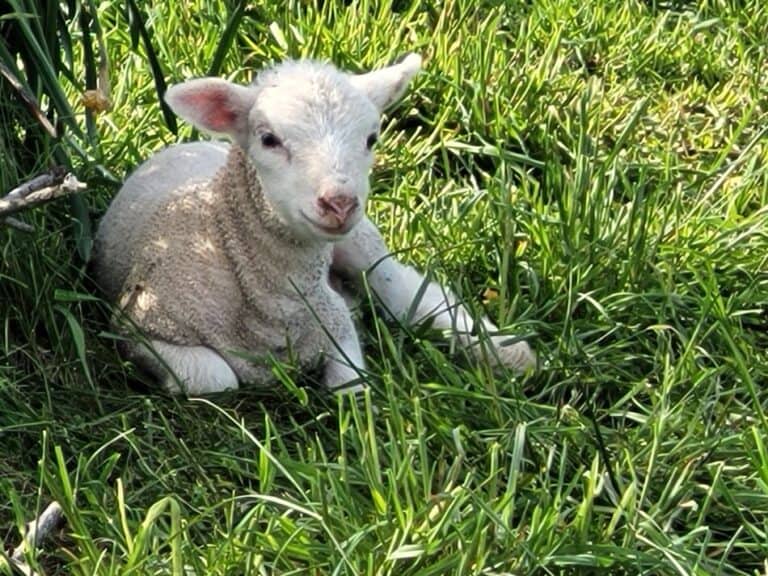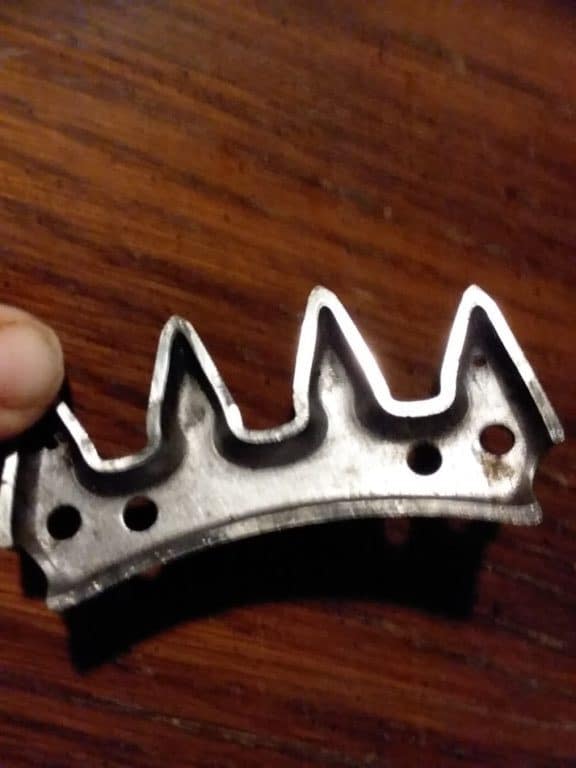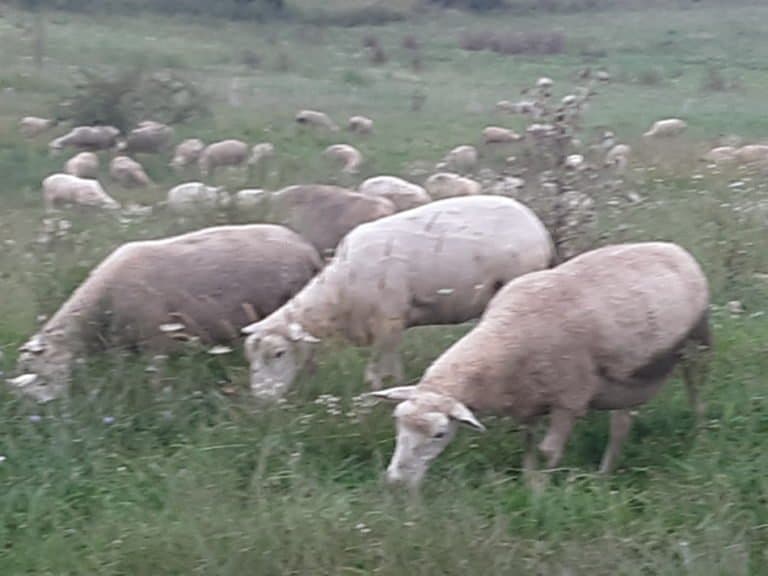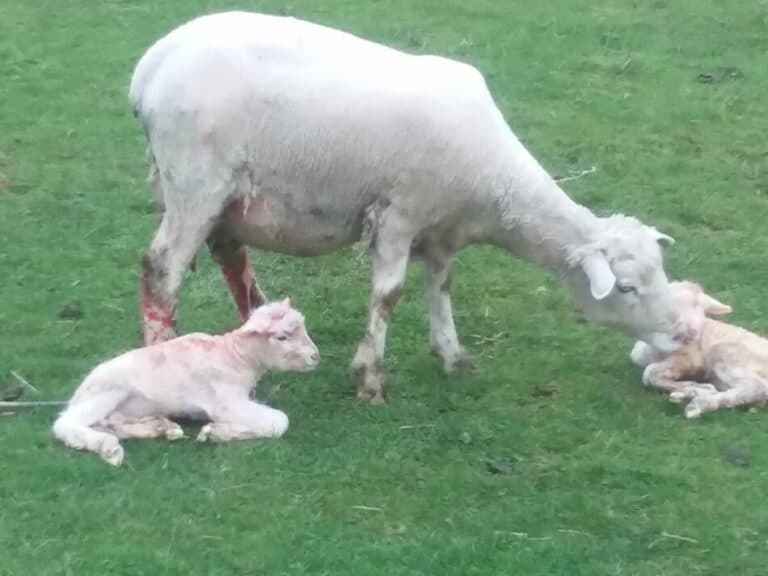Sheep Or Goats: Which Is More Profitable For A Small Farm?
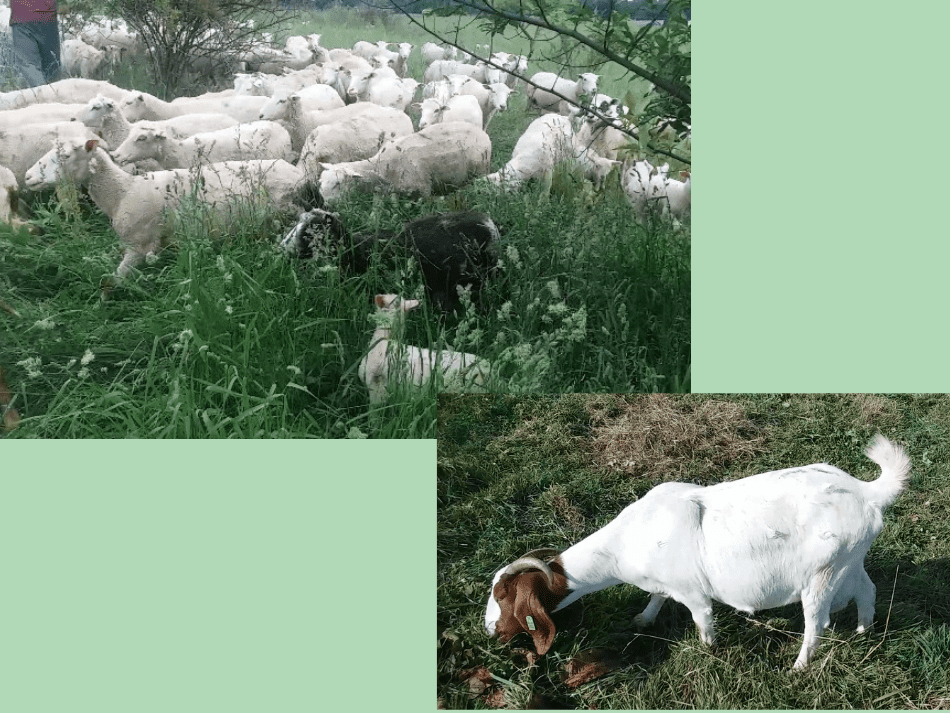
Small ruminants like sheep and goats are a great place to start when you want your hobby of farming to start making some money.
Will sheep or goats work better for you and your wallet?
Sheep will be more profitable than goats when there is plenty of grass to feed the flock. Goats will be more profitable when the available roughage is browse (not grass).
Sheep and goats get thrown together in the same sentences frequently, almost like they are forever together, like salt and pepper or Siamese twins! Nothing could be further from the truth!
Sheep and goats do have a few similarities, but overall, they are very different animals that excel (therefore profit!) in very different situations.
Profitability of sheep and goats
We all know that profitability is the difference between the money you put into raising your stock and the money you get out of them when you sell some, like market kids or lambs.
What you might not know is that the biggest expense in your budget (for raising either) is feed costs.

Keeping the rest of your costs down to a reasonable level and keeping productivity high are the keys to a profitable livestock business.
Since feed is the largest cost per year for raising any animal, we’ll start with feed. Read my articles Feeding Meat Goats For Beginners and Raising Sheep for Profit to get more details!
Feed costs for sheep and goats
As far as money coming out of your wallet, nothing will make more of a dent in your budget than buying feed. It only makes sense that this is the place to start when looking to see whether sheep or goats is best for you.
Feeding sheep
Sheep are grazers, meaning they eat grass. More than that, sheep thrive on grass. They can get all of their ration (daily food needs) from grass, a salt block and water.
If you have grass pasture available for your sheep, this is the best way to keep them healthy and save money at the same time.
Purchasing hay for sheep
Regarding purchased hay, sheep are going to be able to use it more efficiently than goats. After all, hay is just dried grass. Since sheep perform better on grass than goats, it just makes sense.

Feeding goats
Goats are browsers, meaning they take the occasional nibbles of grass, but they are really looking for weeds to strip or the budding ends of stems to eat.
If you have a brushy farm, or a pasture that needs the incoming briar takeover controlled, you need goats. Sending in a team of four legged helpers to take back areas that are getting out of control, that’s all goats!
If the area you have for animals will suit a goat’s nutritional needs, goats will make you more money on that land than sheep.
Purchasing hay for goats
Regarding purchased hay for goats, you’ll need to be on your game for this one.
As soon as you say “I’m looking for some hay for my goats” people figure you are saying you are looking for cheap/junky hay. Not at all!
Dispite the “eat everything, even the tin cans in the garbage” stereotype of goats, the truth is that goats need a higher nutrition level in their ration than sheep.
Goats have a fast digestive system. They need to absorb nutrients quickly, requiring a high quality hay to start with. Check out my article Are Meat Goats A Profitable Small Farm Business for more specifics.
Yearly care costs for sheep and goats
Now we are getting into costs of your time and your money. Things like hoof trimming, vet care, deworming and in the case of wool sheep, shearing.
Yearly care for sheep
- Hoof trimming-depends upon where you live, dry areas don’t need to trim like wet areas
- Deworming-all livestock need deworming. Be sure to use the dewormer before you see problems with the sheep!
- Vet care-we do all of our own medical work with the sheep. If you are not comfortable with this, then schedule a vet visit to have the routine stuff, like shots and deworming done for you. Emergency care is just as likely in both sheep and goats.
- Wool sheep will need yearly shearing. This is easily taken care of by asking around for suggestions from fellow sheep owners or buying the clippers yourself. If there are sheep at your local fair, there are people around who shear them. If shearing is a deal breaker for you, consider getting hair sheep instead.
Yearly care for goats
- Hoof trimming-same as for sheep, maybe.
- Deworming-same as for sheep with the catch that goats seem to need much higher doses of dewormer per pound than sheep. This will all be listed out on the label for you. This is not a huge expense but is something to be aware of.
- Vet care-same as with sheep. Emergency calls are no more or less likely to be needed in goats than sheep.
Handling facilities for sheep and goats
Really, the handling facilities for both sheep and goats will be very similar.
Handling facilities for sheep
Occasionally, you’ll get a high strung sheep breed that will be an impressive escape artists, but overall, not so much.
Usually sheep are pretty easy to keep in as long as they have a buddy and plenty to eat and drink.
An example: We keep ewes with new babies in lambing jugs (individual pens) that we can just barely step over, but short enough so we don’t need to climb over. The gates are short and the sheep stay in just fine.
Any place where the sheep would get overly excited and look for a fast exit (like when you are trying to catch one), should have a higher side, more like 4 feet.
This is the height of a cattle panel, which are great for sheep, by the way.
Handling facilities for goats
Goats are the captains of agility. Any pen where you want goats to stay needs to have high sides so they can’t jump out.
The shape and size of the area can be the same as for sheep, the sides just need to be higher.
Have a cattle panel (4 feet tall) or equivalent as your pen sides for all goats. Shorter will equal escaping.
Don’t forget about looking around in the pen.
Anything in the pen, like a bale of straw, that the goats can use like a step stool to help them escape, they will. Ledges along the wall, over turned buckets, anything like that.
A telling example: Our 5 month old doelings were getting out of their pen and I couldn’t figure it out, they weren’t very tall! Until I realized there was a small ledge that they could launch off of and escape.
They still had to jump over the remaining side of the pen and drop down over 6 feet on the outside!
Apparently it was fun, because they did it all the time until we put up more boards on the side. From the outside, it looks like we’re trying to pen up a giraffe, but that’s what it took to keep those two characters in!
Money coming in! (Revenue)
The main sources of revenue (income) from sheep and goats will be selling the younger stock, as market or replacement animals and selling proven, older stock as breeding animals.
Selling breeding stock, both sheep and goats
For our area, the cost of buying a replacement doe or ewe is running about the same.
The variety in purchase price that you will see when looking into prices in your area has more to do with if the animal is show stock, registered, an unusual or really popular breed, time of year, open (not bred), close to lambing or kidding, etc.

As far as I am aware, goats tend to have a higher birth rate than sheep. Goats seem to average closer to 2 kids per doe, whereas, sheep are more in the range of 1.5 lambs per ewe.
Of course, you can only sell what you raise to market size and condition, none the less, more babies born means more babies to potentially sell.
Selling market kids and lambs
We sell our sheep as market lambs for our main source of income on our farm. I have listed the prices for lambs and kids yesterday (late Jan. 2020) at the local weekly auction.
Current Selling Price For Goats shows you how to find prices for your area.
Remember- unless you live in Ohio, my area is not your area. The prices we get around here may or may not be the prices you get in your area. You must check this out for yourself!
A huge part of local price is local eaters and what they want or prefer. Some groups like older goats best, some prefer younger and on the smaller side, some younger but on the larger end, still others would really rather have sheep.
Figuring this out is the most challenging aspect of raising sheep and/or goats and the most essential!
If you want to be profitable, you must be selling what the local market buyers (eaters, butchers, livestock sale buyers) want and are willing to pay for.
Selling market lambs
The price you get for selling market kids or lambs is different, at least for our area.
How Much Will My Lambs Sell For? shows you how to find lamb prices for your area.
Market lambs tend to be higher weight but lower price per pound, more like 80-110 pounds bringing right around $2.00 per pound live weight.
Before you out your calculator, remember price is area specific and seasonal.
To get accurate numbers, you must look at the past few years worth of auction results from your area.
Here is a link to the auction where we sell most of our livestock Mt. Hope Auction.
While these will not be the numbers for your area, it will give you an idea of what you are looking for. You can go back and look through past results as well.
Selling market kids
Market kids are currently the opposite of most lambs around here, a lighter weight of 40-60 pounds and a selling price closer to $3.00 per pound live weight.
As mentioned above, do the math yourself. Prices change with the season, not to mention your region of the country.
A potential source of confusion: in our area goats are sold by the head. Not sure why, since most other auctions sell by the pound.
The reason this is important is-you need to know which one you are looking at when you are making your calculations.
If your area lists out the prices of both lambs and kids by the pound, good news, your comparisons are easy.
If the price is by the head, you’ll have to guesstimate the live weight.
You want to have both as price per pound or price per head, so that you can compare accurately.

Total profitability for sheep and goats
This is the part where you put together all of the information you have gathered and start doing some math.
No one can tell you what will work for you and your situation, because no one has the same resources and farm as you.
Take well meaning advice from a trusted source, of course! In the end, do the math and decide for yourself.
Here are some calculations ideas to get you started:
Ration cost/head/day
Cost of hay + feed=Ration costs per day
Use the cost of hay divided by 2,000 to get cost of hay per pound then multiply by pounds of hay needed per day (usually a % of body weight).
Use price of feed per pound, remember the bags at the farm store are 50#.
Gain ratio
This just means the pounds of feed or forage animal needs to eat to get one pound of gain.
Usually there is a benchmark that you are trying to hit, like .25 pounds of gain per day per animal.
Average number sold/mom
Notice I wrote sold, not born. They don’t make you any money until you sell them! Generally goats will average babies per mom than sheep.
For another perspective on sheep vs goats, read So You Want To Raise Sheep or Goats? by Penn State Extension.
